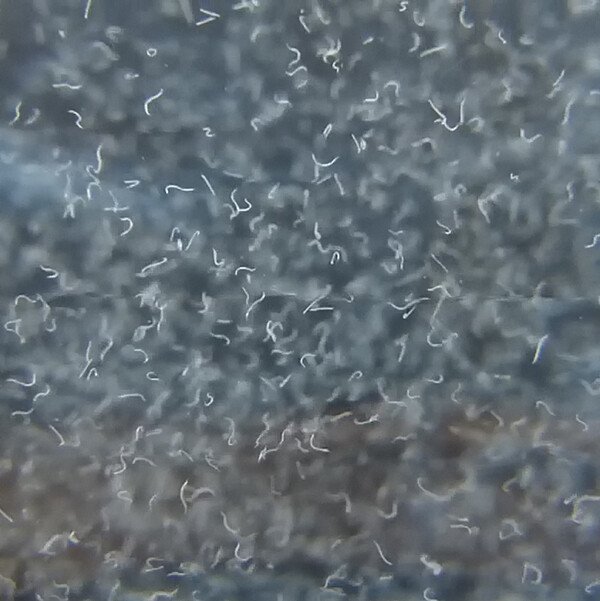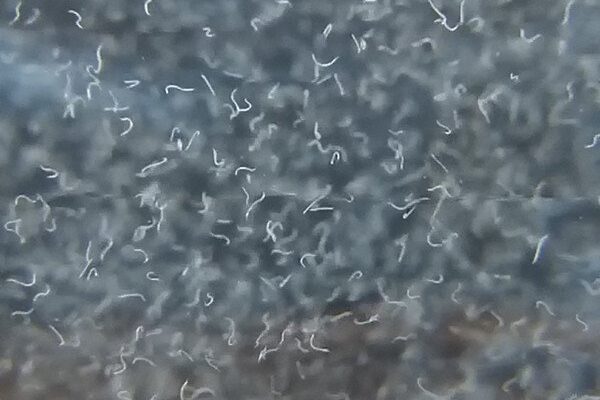
To put it simply, microworms are tiny, free-living nematodes that thrive in various environments. They can be found in soil, freshwater, and even some marine ecosystems. When you think of using microworms for environmental monitoring, picture a delicate dance between science and nature—where these little creatures contribute to our understanding of the world around us. Plus, they’re cost-effective and straightforward to raise, making them an accessible option for researchers and eco-enthusiasts alike.
So, let’s dive deeper into this topic and explore how microworms can be utilized for environmental monitoring or bioindication.
What Are Microworms?
Microworms, known scientifically as *Panagrellus redivivus*, are microscopic roundworms that typically measure around 1-2 millimeters in length. While they might be small, they are incredibly resilient and can adapt to various environments. Honestly, they’re like the little soldiers of the soil, surviving in conditions that many other organisms would find challenging.
These tiny creatures are often used as a food source for fish and other aquatic animals due to their nutritional benefits. But their role doesn’t stop there. Microworms can indicate the overall health of an ecosystem. They’re sensitive to environmental changes, which means their presence or absence can tell us a lot about the quality of soil or water in a given area.
You might be wondering what makes microworms such reliable indicators. Their responses to pollution, temperature fluctuations, and changes in water chemistry can be surprisingly telling. If you’re looking for a unique way to monitor environmental conditions, these little guys might be your best ally.
The Role of Microworms in Environmental Monitoring
So, how exactly do microworms contribute to environmental monitoring? Their primary function lies in their sensitivity to pollutants. When toxins infiltrate their habitat, it can affect their behavior and reproduction. This makes them excellent candidates for bioassays, which are experiments that use living organisms to test the toxicity of substances.
For instance, if you were to expose microworms to different concentrations of a contaminant, you could observe how many survive or reproduce. A significant drop in their population could signal a concerning level of pollution in the environment. This approach is not only effective but also relatively low-cost compared to traditional monitoring methods.
Additionally, microworms can be used to monitor soil health. By assessing their populations in different soil types or locations, scientists can gauge how well ecosystems are functioning. A thriving microworm community typically indicates healthy soil teeming with nutrients, while a sparse population might raise red flags.
How to Culture Microworms
If you’re interested in using microworms for monitoring, your first step is to culture them. Don’t worry; it’s easier than it sounds! You’ll need a few basic materials to get started:
- A small container or jar
- Oat or wheat flour (as a food source)
- A source of water (preferably dechlorinated)
- A pinch of baker’s yeast
To culture microworms, simply mix equal parts of flour and water in your container until you achieve a paste-like consistency. Sprinkle a tiny amount of baker’s yeast on top, and voilà! Cover the jar with a breathable material like cheesecloth to keep the moisture in while allowing air flow. Place the jar in a warm spot, and within a few days, you should start to see those tiny wigglers multiplying.
Keep in mind that they thrive in moist environments. If they seem to be drying out, a little splash of water will help. Regularly check the culture, and you’ll soon have a steady supply of microworms ready for your projects.
Using Microworms for Bioindication
Now that you’ve got your microworm culture going, how can you use them for bioindication? The process typically involves sampling and observing the microworms in various environments.
First, collect samples from different locations—like a local pond, a stream, or even your backyard. Ensure you collect samples from distinct areas, as this will give you a broader view of environmental health. From there, introduce the microworms into each sample. Monitoring their behavior, reproduction rates, and overall health can provide insights into the respective ecosystems.
You might notice that in a cleaner environment, the microworms are lively, moving about freely and reproducing quickly. In contrast, a polluted area may show fewer worms or sluggish movement. This kind of visual monitoring can be both engaging and informative, especially for educational purposes or community awareness.
Benefits of Using Microworms in Monitoring
There are several advantages to using microworms for environmental monitoring:
1. Cost-Effective: Unlike some sophisticated lab equipment, culturing microworms is relatively inexpensive and requires minimal resources.
2. Ease of Culture: With simple materials and straightforward methods, anyone can start a microworm culture, making it accessible for schools, researchers, and hobbyists.
3. Environmental Sensitivity: Microworms react quickly and effectively to changes in their environment, providing real-time insights.
4. Educational Opportunities: Using microworms in environmental monitoring can serve as an excellent educational tool for teaching about ecosystems and the effects of pollution.
Let’s not forget, these benefits make microworms an excellent addition to your environmental monitoring toolkit, whether you’re an individual enthusiast or part of a larger research team.
Challenges and Considerations
While microworms can be fantastic for monitoring, there are a few challenges to keep in mind. For one, their effectiveness can be influenced by various factors, including the temperature of the environment and the presence of other microorganisms. It’s essential to standardize conditions as much as possible when conducting experiments.
Another consideration is that microworms are best suited for certain environments. They thrive in moist habitats but may struggle in drier conditions or heavily polluted areas. This doesn’t mean they’re useless; it just means you might want to complement them with other monitoring methods for comprehensive results.
Finally, be prepared for some hands-on work. Culturing and monitoring microworms does require a bit of time and attention. However, the payoff is often worth it, as the insights gained can contribute significantly to environmental science.
Using microworms for environmental monitoring or bioindication offers a refreshing and practical approach to understanding our ecosystems. These tiny creatures provide valuable insights, acting as indicators of soil and water health while being easy to culture and maintain.
If you’re looking to dive into the world of environmental monitoring, consider starting your microworm culture. Not only does it pave the way for engaging experiments, but it also helps raise awareness about the importance of healthy ecosystems. So grab your supplies, get those worms wriggling, and become an advocate for our environment—one tiny worm at a time!

